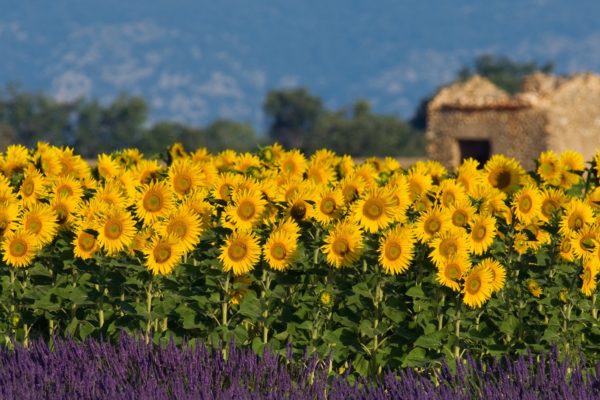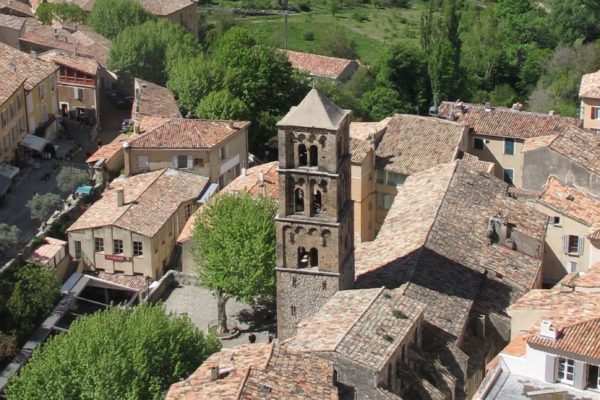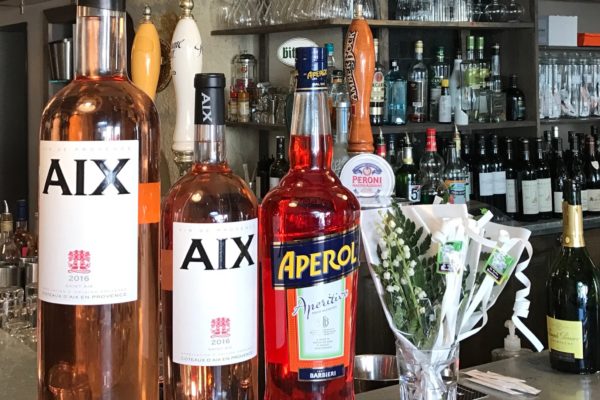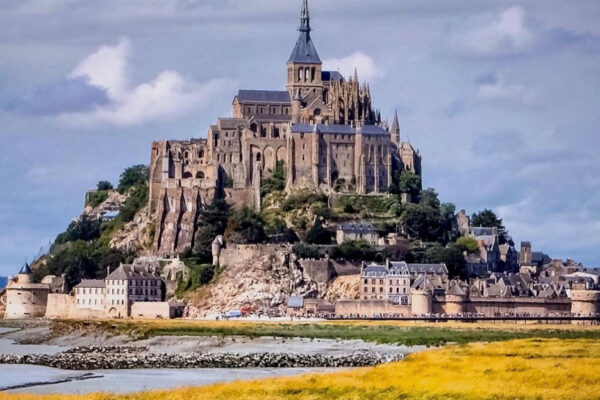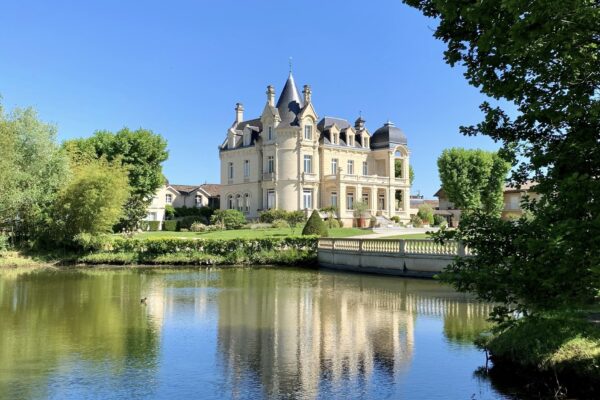Chêne Bleu: Vineyard Sanctuary
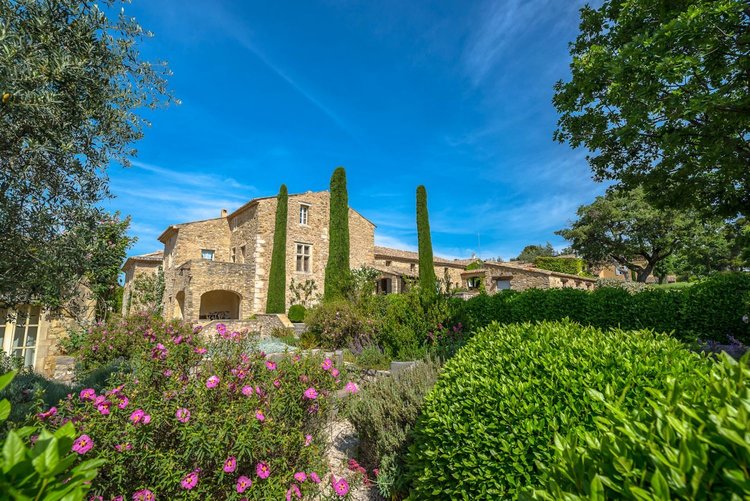
by Marla Norman, TCO Publisher
Driving through the southern Rhône valley and Châteauneuf-du-Pape, we pass ancient rows of thick twisted vines — grotesque, but stubbornly beautiful survivors nonetheless. Just outside Gigondas, the road begins to climb as we head to Chêne Bleu (Blue Oak). One of the highest vineyards in the region, the estate sits in the Dentelles de Montmirail on Mount Ventoux, some 2,000 feet above sea level.
Nestled amongst the clouds, Chêne Bleu has its provenance in a four-cornered borderland, where the boundaries of Gigondas, Côtes du Ventoux, Côtes du Rhône and Séguret come together. This singular location inspired wine critics to brand Chêne Bleu as the “First Super Rhône.”
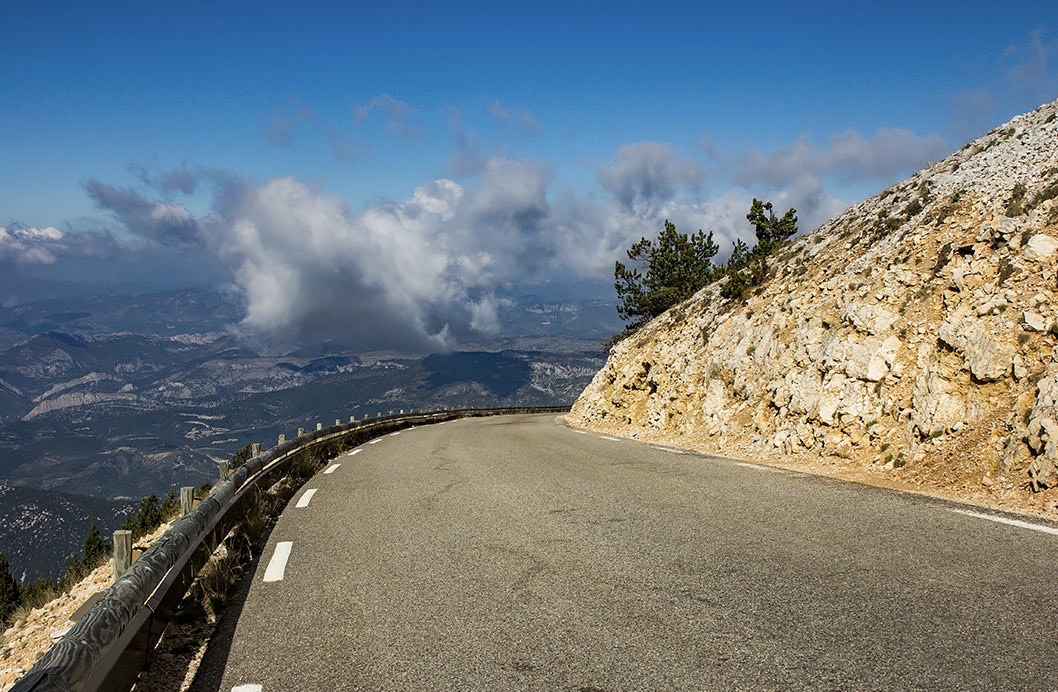
“Heart-stoppping scenery” on the roads through Mount Ventoux to Chêne Bleu. Photo courtesy of Tour de France.
Continuing the ascent, we encounter hairpin turns and precipitous drops. Those of you who have traveled with us know Michel loves challenging driving. His Alpine heritage kicks in — he’s grinning from ear to ear. Meanwhile, I’m thrilled by the spectacular views and panicked simultaneously. The term “heart-stopping scenery” never seemed more appropriate.
An hour or so into the drive, we reach the pretty village of Crestet. Reassuringly, signs for Chêne Bleu appear. The road, however, disappears into deep woods. Huge oak trees arch overhead. Leafy tunnels block out the sky. Occasionally another car appears out of nowhere and we cautiously negotiate a means of passing each other.
Then, all at once, the forest opens and we reach a vast clearing. Chêne Bleu sits on a broad hill — a sentinel over the vineyards.
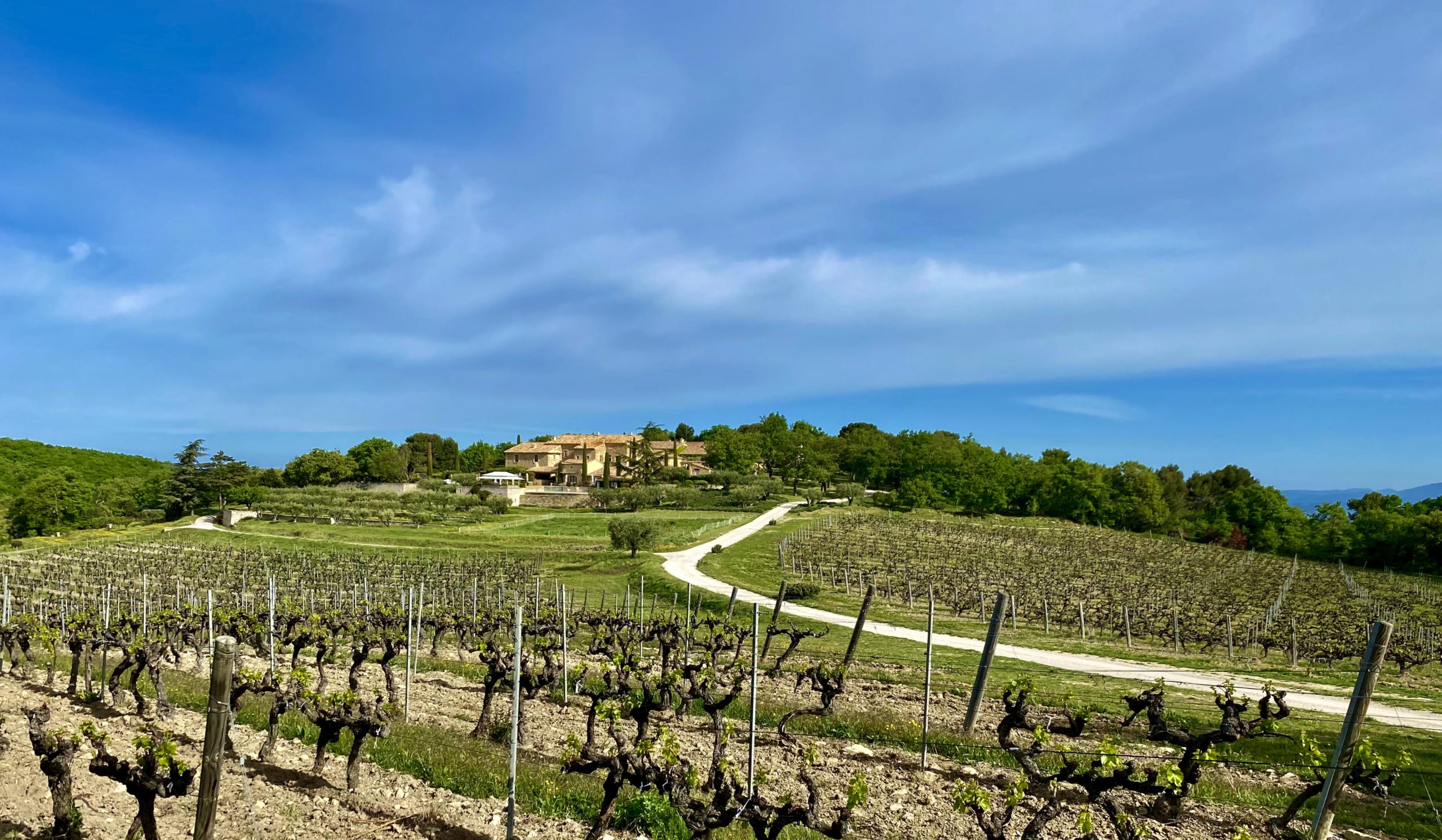
Chêne Bleu – at 2,000 feet above sea level, is one of the highest vineyards in the region. Photo by Marla Norman
Entering the tasting room, we’re greeted by a young man. “You must be the importers from Texas,” he says. “I’m Carlo. Welcome!” Inviting us to sit down, he begins to line up bottles and pour as he tells the story of Chêne Bleu.
CHÊNE BLEU THROUGH THE CENTURIES
Vineyards have existed at this Mont Ventoux site since the ninth century. The earliest written records date to 1026, when the property was used as a farming priory for nearby Abbaye de Prebayon. Later, none other than the Knights Templar took over the management because of its high, defensible position.
Centuries passed, then in 1427, a glassblower named Aliot de Montvin purchased the property and changed the name to La Verrière (The Glass Workshop). But eventually, the estate passed down through generations until inheritance issues caused the property to be abandoned and put up for sale.
Fast-forward to 1993, when Xavier Rolet, then CEO of the London Stock Exchange, and his wife Nicole, fell in love with the old priory. By this time, the property was in a state of complete dilapidation. The roof had collapsed on the main building and, because it had been used as an animal shelter, the floors were covered with over six feet of hardened dung. Adding to the challenges was a lack of water and electricity.
But, the Rolets are visionaries. For over 12 years, the couple worked to restore the buildings and grounds. Because local roads are impossible to use for transporting heavy materials, helicopters were (and still are) used instead. Xavier’s lucrative day job supplied the large sums of cash needed for renovations, while Nicole oversaw the day to day management of the property.
As the priory was being reconstructed, the Rolets began to nurture the neglected vineyards. Healthy vines were kept, including some of the 70-year old Syrah and Grenache Rouge. But, numerous plots were replaced with Rhône varietals — Roussanne, Marsanne, Viognier, Grenache Blanc and Mourvèdre as well as additional plantings of Syrah and Grenache Rouge — a total of 35 hectares (87 acres) have now been reclaimed.
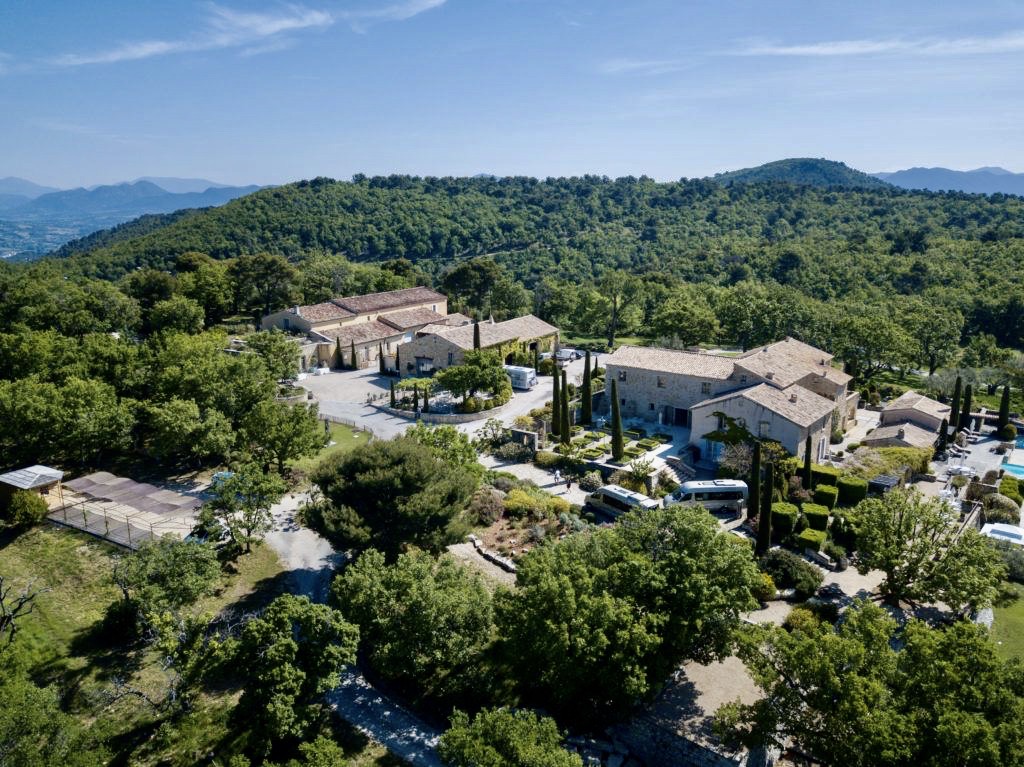
Overview of Chêne Bleu estate, with the restored priory on the right, tasting room and winery on the left. Photo courtesy of Chêne Bleu.
Once the vineyards began to thrive, a state of the art winery was the next Herculean project. Excavation of a 12-meter-deep (36 feet) crater through solid rock was the first daunting task. A cellar was constructed with an additional two stories above ground. Hillsides and natural topography were incorporated into the design to create a gravity-flow winery without disrupting the landscape and nearby forest.
Because Chêne Bleu is located within the UNESCO-designated Mont Ventoux Biosphere — a 81,000-hectare (200,000 acres) nature preserve and bird sanctuary — the entire estate is managed in accordance with biodynamic principles. No synthetic fertilizers or chemicals are used. Organic humus comes from the estate’s own composting bins.
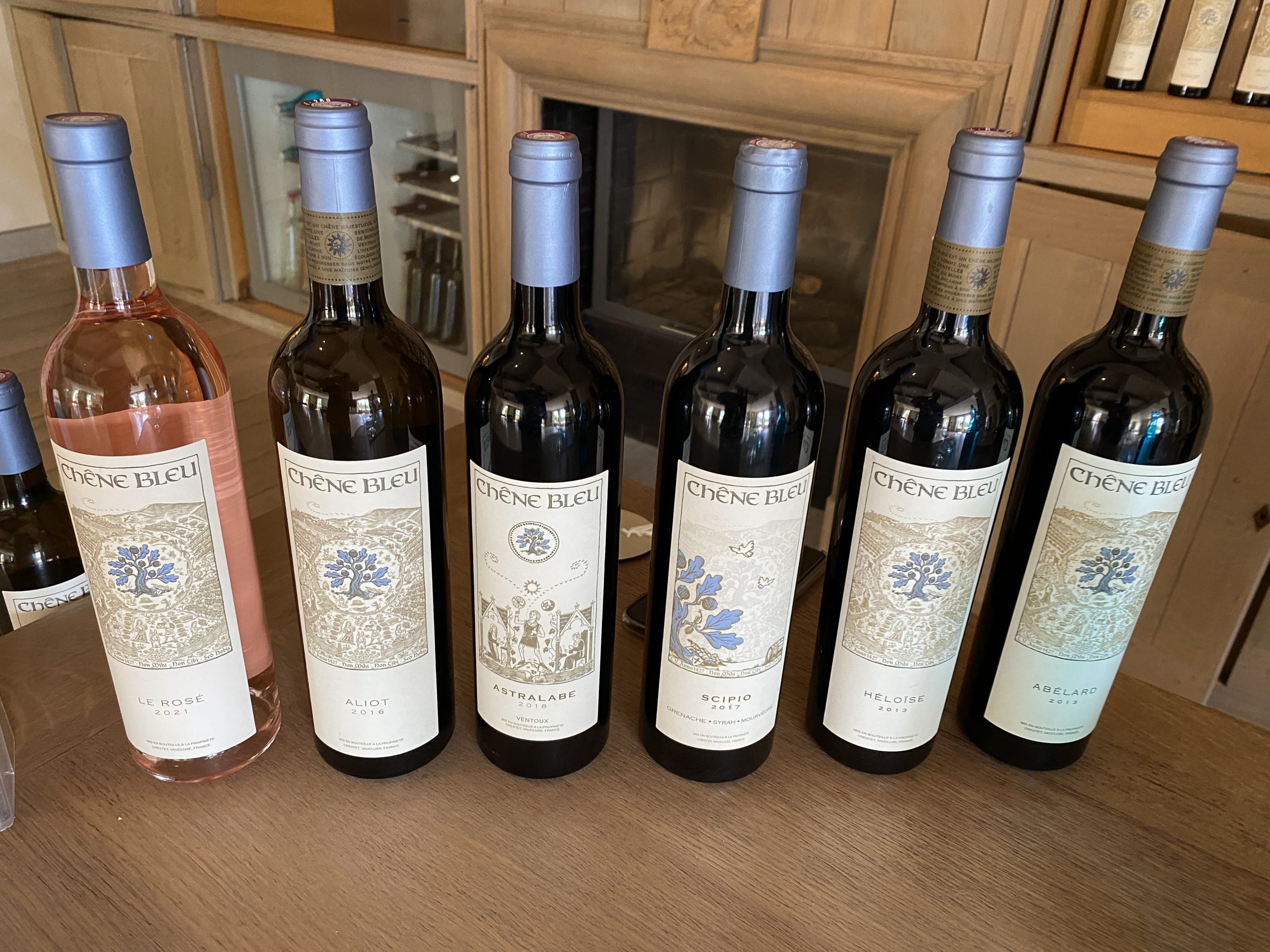
The wines of Chêne Bleu feature Rhône varietals — Roussanne, Marsanne, Viognier, Grenache Blanc and Rouge, Mourvèdre and Syrah. Photo by Marla Norman.
The vineyards and entire estate depend on natural springs and subterranean water tables. The Rolets have planted a species of waste-cleansing bamboo to purify and recycle the water used in the winery.
Finally, after centuries of neglect, the estate is pristine, self-sufficient and producing award-winning wines.
THE PRIORY
Following our tasting, Gregory Béguin, the charming and multi-talented property manager, escorts us to the priory itself. Walking into the 1,000-year old building for the first time, we’re immediately struck by the uniqueness of the place. Thick stone walls are beautifully proportioned and have an undeniable presence. And, now that we fully understand the decade-long effort made to restore them, we’re even more appreciative.
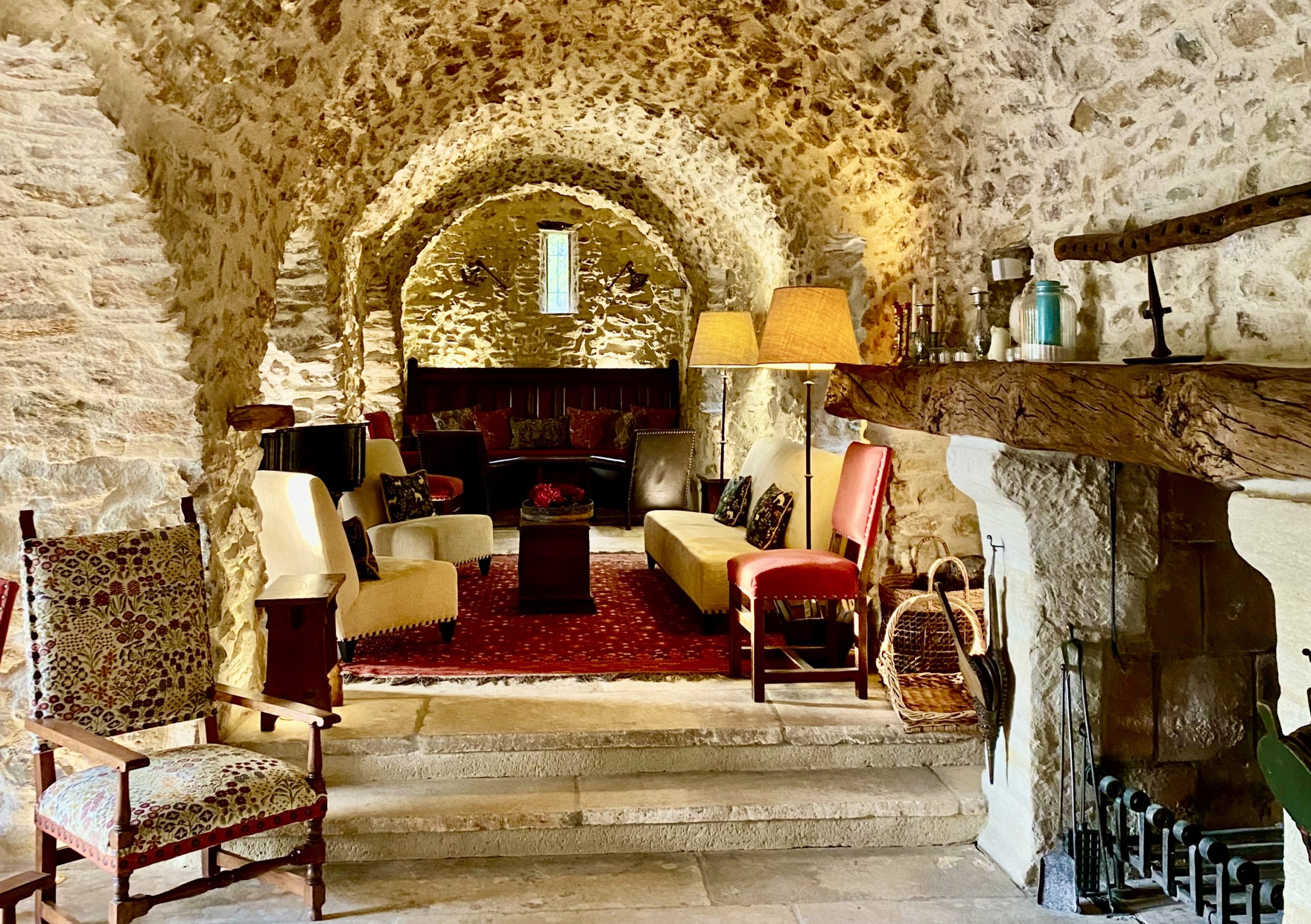
Priory sitting room at Chêne Bleu. Photo by Marla Norman.
Chêne Bleu offers five guestrooms in total — each is different. Decorations and period furniture reflect the environmental aspect of the property, with names such as Coquelicot (Poppy), Lavande (Lavender) and Olivier (Olive Tree). All are thoroughly modern with spectacular views of the surrounding mountains and vineyards. A swimming pool and tennis courts are available as well.
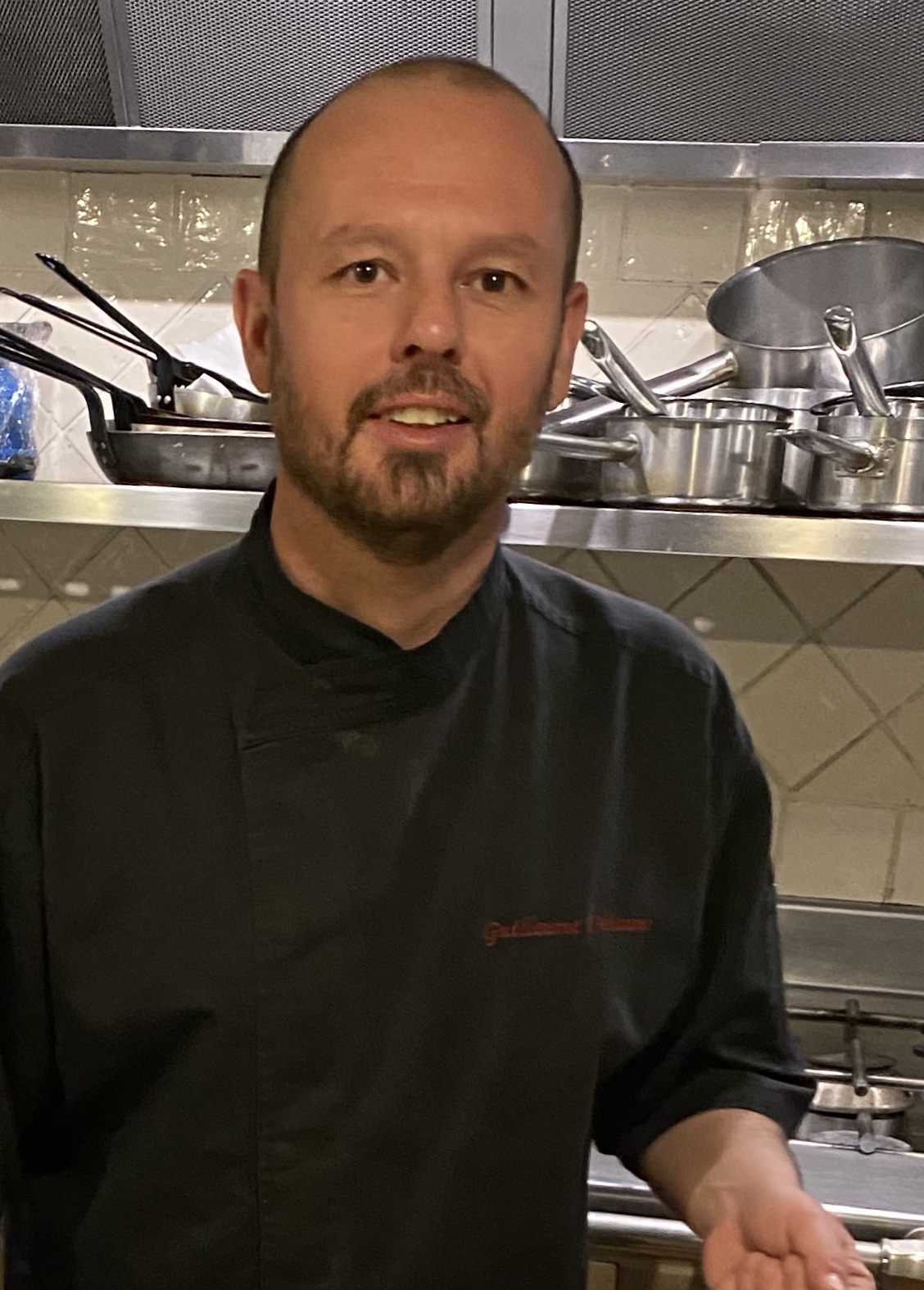
Chef Guillaume Delauné utilizes the estate gardens, fruit and olive trees in his delectable cuisine. Photo by Marla Norman
Once settled in, we realize that the long drive and centuries of history have made us ravenous. But we’re not sure what to expect from a small kitchen in such an isolated setting.
We needn’t have worried! Chef Guillaume Delauné makes full use of the estate gardens, fruit trees, olive trees and even an apiary producing delicious honey. Locally sourced cheeses, fish, poultry and meat are abundant as well.
As we relax in the main salon, Gregory reappears with appetizers and glasses of the Chêne Bleu Rosé – a finely textured, Syrah-Grenache blend – perfect as an apéritif. We’d sampled the wines in our earlier tasting, but we’re looking forward to a meal fashioned around the estate collection.
The first course, a savory vegetable tart, is accompanied by the Roussanne blend named “Aliot” for Aliot de Montvin, the glassblower who owned the property in 1427.
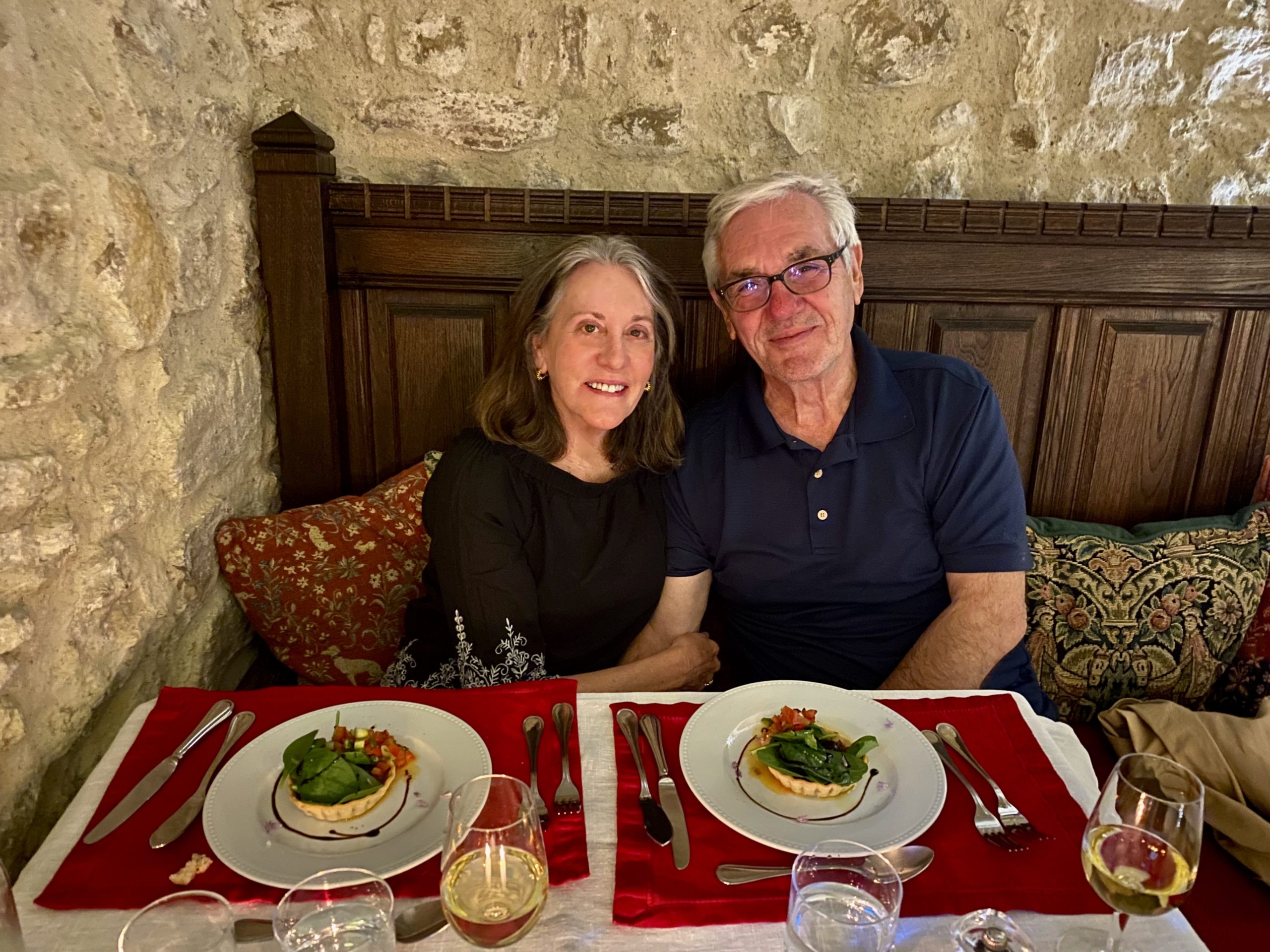
Marla & Michel dining at Chêne Bleu. Photo by Gregory Béguin.
A delicately poached river trout is paired with the Syrah blend, called “Héloïse” — the wine is concentrated and rich, with notes of sweet spice, licorice, prunes and a hint of truffle.
A superbly roasted chicken breast with potatoes au gratin is served with the “Abélard” Grenache blend. The wine is rich and concentrated with ripe red fruit, black cherry and mocha.
The two Chêne Bleu reds are named after a pair of renowned lovers from the 12th century. Pierre Abélard, a theologian and philosopher fell passionately in love with his young student, Héloïse d’Argenteuil. Their illicit love affair was discovered and Héloïse was banished to a convent while Abélard was sent to a monastery. The couple exchanged letters for years; their correspondence survived and has been published in multiple languages. Ingeniously, the Rolets have chosen the pair to represent the wines from their 1,000-year old property with its religious origins.
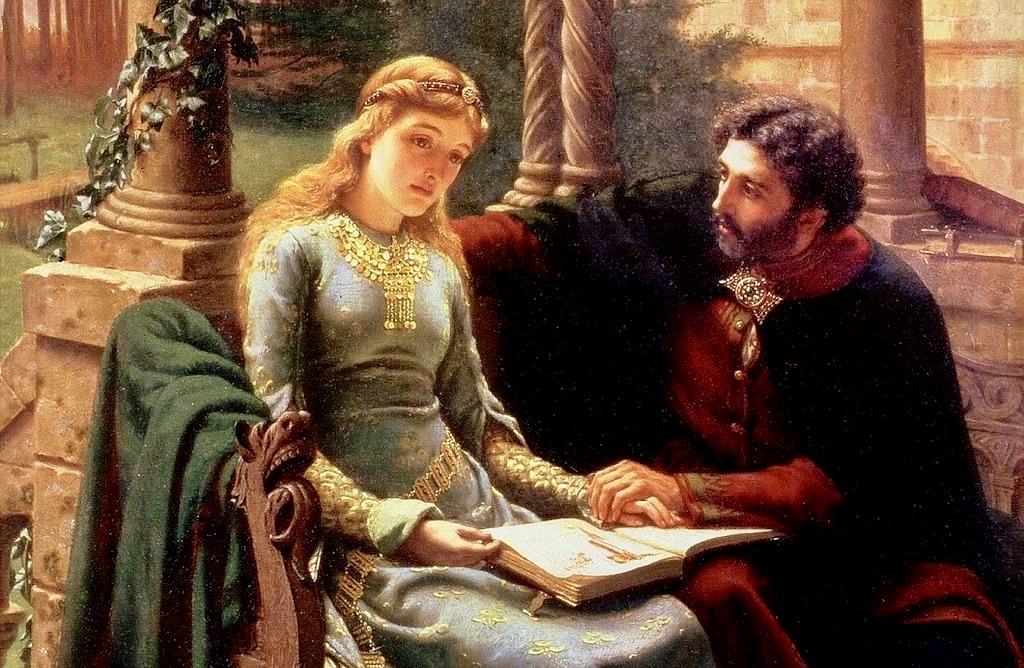
Painter Edmund Blair Leighton’s romantic depiction of the 12th century lovers: Héloïse d’Argenteuil & Pierre Abélard.
After dinner, we stroll the grounds, watching shadows play on the massive stone walls. Aromas of lavender, wild rosemary and thyme drift on the breeze. All is tranquil and quiet. And at this hour of the night, we almost expect Héloïse and Abélard to appear and share their star-crossed story.
THE BLUE OAK
On the following morning, we explore the property further, with visits to the vegetable and flower gardens. In addition to the lettuces, beans, tomatoes, et al, medieval varietals are being propagated to recreate the original 9th century gardens that served Abbaye de Prebayon. Nearby are bee hives, as well as fruit and olive trees.
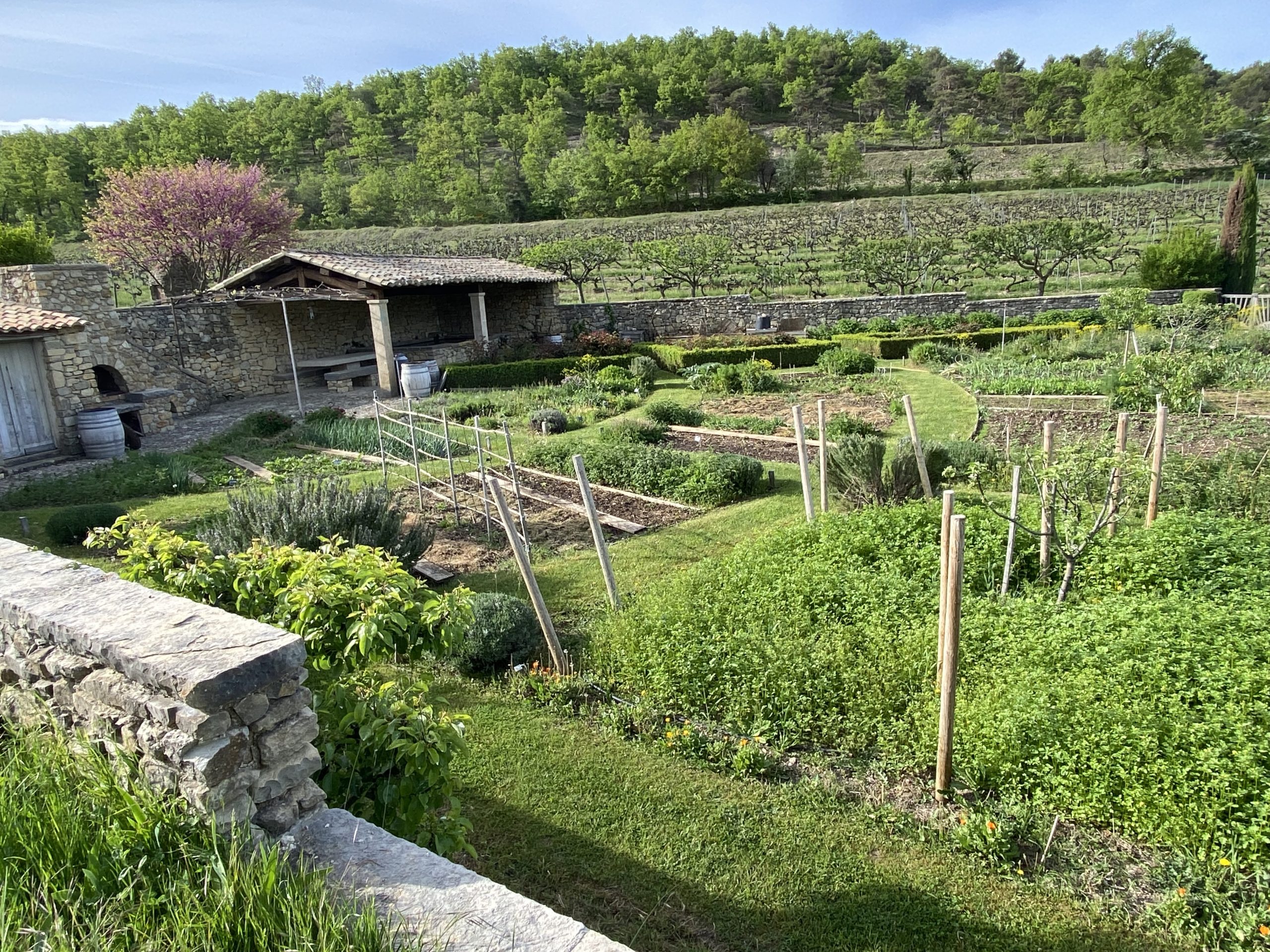
At the estate garden, vegetables and herbs are being propagated to recreate the original 9th century gardens. Photo by Marla Norman.
Walking past the vineyards, we reach the edge of the property just as the forest begins to emerge. We’re looking for the giant Blue Oak tree for which the property was named. The tree stood at the edge of the estate presiding over the vineyards for centuries.
Tragically, a drought in 2005 severely damaged the tree. But, an inventive Provençal artist — Marc Nucera — treated the oak with bouillie bordelaise, a blue-green solution used to protect organic vineyards. With Nucera’s treatment, the tree was preserved and became a striking piece of natural art and symbol for the long-enduring property.
Then tragedy struck again in 2020, when one of the region’s notorious Mistral storms blew in and the magnificent Blue Oak collapsed. The Rolets are designing an appropriate memorial, while also planning to select another tree to “receive the bleu-livery in a formal Changing of the Guard.”
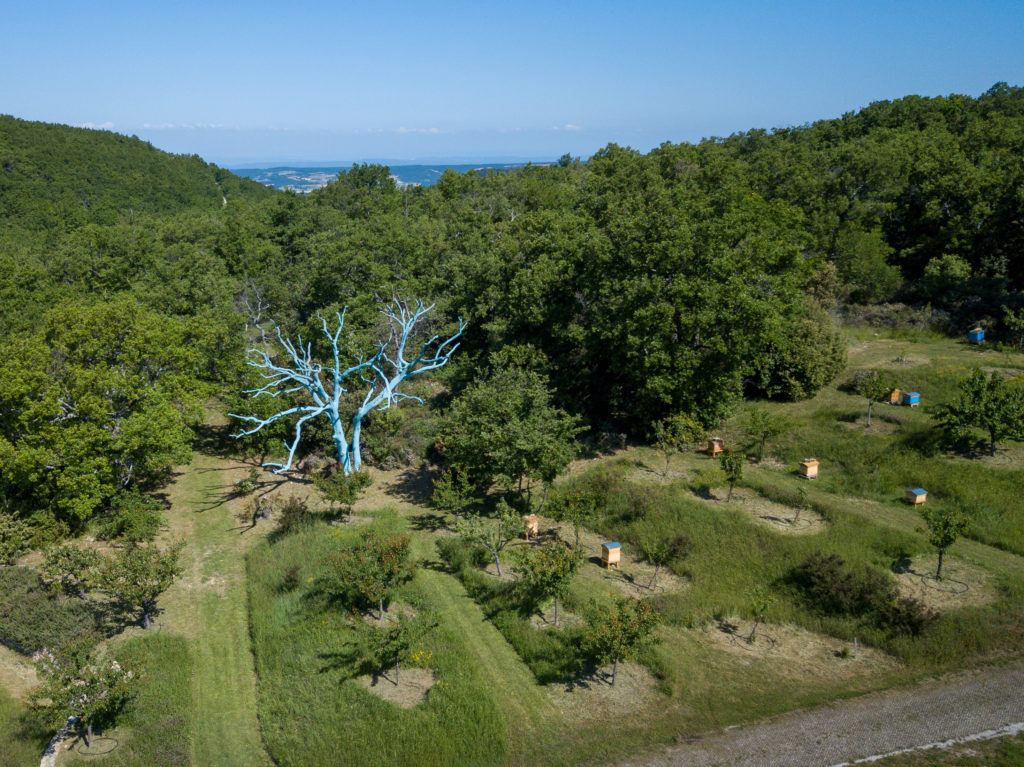
The original Chêne Bleu – the giant painted oak tree that inspired the name for the estate. Bee hives dot the landscape as well. Photo courtesy of Chêne Bleu.
We pay our respects to the original Chêne Bleu and continue walking — marveling at the beauty and spirit of the place. At some point in our travels through Provence and encounters with historical Templar properties, we had been told that the enigmatic knights chose locations where “celestial and terrestrial energy converge, binding Heaven and Earth together.” Without a doubt, that sacred energy continues to flourish at Chêne Bleu.
More on the wines of Chêne Bleu at Michel Thibault Wine




